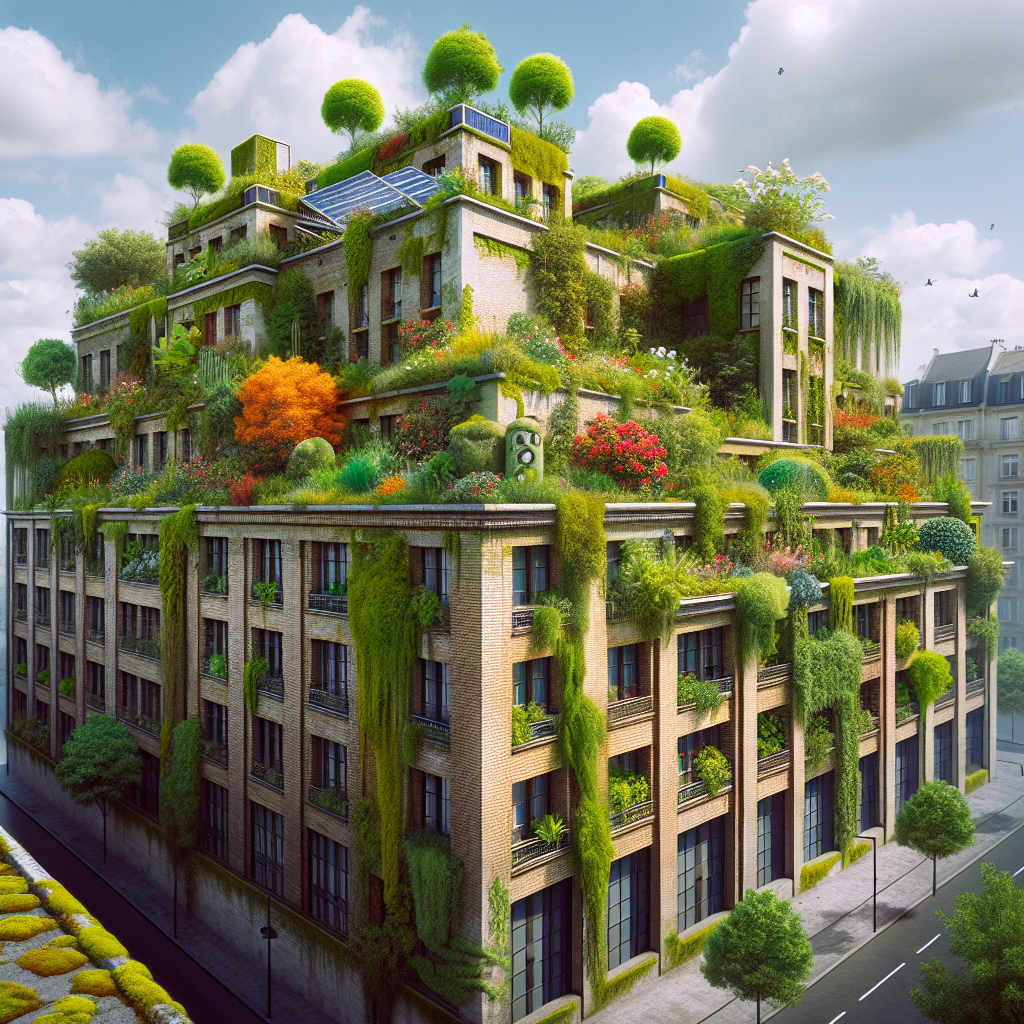The Green Revolution Up Above: How Vegetation-Blanketed Roofs Insulate Our World
In our ever-changing tapestry of architecture, there’s a marvel that has been quietly growing overhead—a revolution that mimics nature’s masterpiece. As improbable as it sounds, roofs covered in vegetation are changing the paradigm of insulation in buildings. Imagine a world where the crowning jewel of a residence or a commercial skyscraper isn’t merely concrete, shingles, or metal, but rather a verdant expanse that breathes life into the very structure it adorns. Dive with me into this unlikely haven where modern construction meets Mother Nature’s blueprint.
The Hidden Power of Green Roofs Unveiled
At the core of this leafy intrigue lies a simple fact: green roofs are not just about aesthetics; they provide remarkable insulation for buildings. By blanketing rooftops with layers of soil, plants, and ingenious design, these eco-friendly roofing solutions dramatically reduce energy consumption. The lush vegetation acts as a natural barrier against temperature extremes, helping maintain a comfortable climate indoors. Beyond just an energy-efficient roofing initiative, they symbolize a fusion of botanical ingenuity and building prowess—a testament to modern construction’s veneration of green energy solutions.
Why Building a Greener Past and Future Matters
This conversation about energy-saving roofing touches upon a significant historical shift. Throughout history, roofs have been essential for shelter, serving as the first line of defense against the elements. In an era where sustainable energy solutions and eco-conscious living are more critical than ever, green roofs have emerged as an emblem of progress in roofing trends. Eco-friendly roofing not only echoes the ancient practice of living harmoniously with nature but also leads the charge toward innovative roofing solutions. These verdant rooftops brighten the urban sprawl while dovetailing perfectly with modern solar energy installations. A true beacon of the roofing industry’s ability to adapt and evolve.
Leafy Delights and Rooftop Revelations
While the pivotal role of green roofs in energy-efficient solutions is evident, their charm extends into delightful corners of trivia. Did you know that green roofs significantly reduce storm water runoff, acting as sponge-like protectors during torrential rains? Furthermore, they provide habitat for urban wildlife, a fact rarely associated with the skyline. Imagine cities humming with the gentle rustle of plant life overhead, each roof an ecosystem, a patchwork of nature and architecture intertwined. Consider pairing an infographic illustrating heat retention of conventional roofs versus their verdant counterparts to visually ground this greenery-based marvel.
Crowning the Future with Nature’s Breath
As we’ve uncovered, the notion that plants swathed across rooftops can both beautify and insulate is undeniably compelling—an intersection of functionality and flair. In embracing such sustainable roofing practices, we’re not just padding our freedom against the winter’s chill or the summer’s blaze—we’re championing a more sustainable way forward. I invite you to share this verdant factoid, spark a dialogue, and perhaps dream of your own leafy oasis overhead. As we ponder our rooftops, could these verdant wonders pave the way to a more harmonious existence with our world?
Need help with your roof?
Whether you’re in Joplin, Grove, or Bentonville, Ridgeline Roofing and Solar is here with roofing solutions you can trust. We care about the quality of the roofs in all communities. Contact us today for a free quote.

